#Juan Alfonso
Text

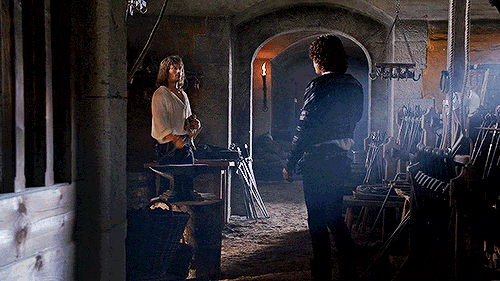




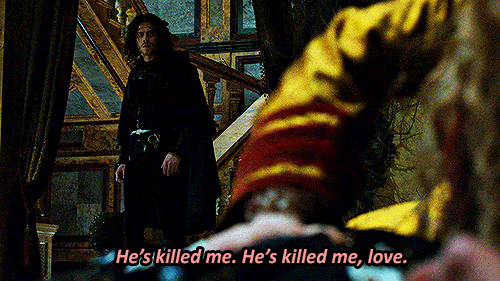


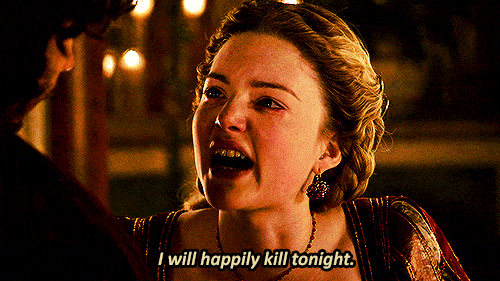



— Brother? Prince to you, not a brother. Husband to your sister.
#i'm not interested in alfonso as a character (no hate or anything) but this parallel hits!!!!#now that cesare’s little brother is dead...someone else has to become the target of his hatred condescension and sexuaI jealousy...#and he chose alfonso rip#juan was looking for love in all the wrong places while alfonso was driven mad by the rumors of his wife *cough* with her brother#ursula paolo alfonso juan...everyone who loved them died#the borgias#theborgiasedit#periodedit#perioddramaedit#smallscreensource#tvedit#tvarchive#cinemapix#tvcentric#juan borgia#cesare borgia#lucrezia borgia#tvgifs#usergif#by jen
232 notes
·
View notes
Text
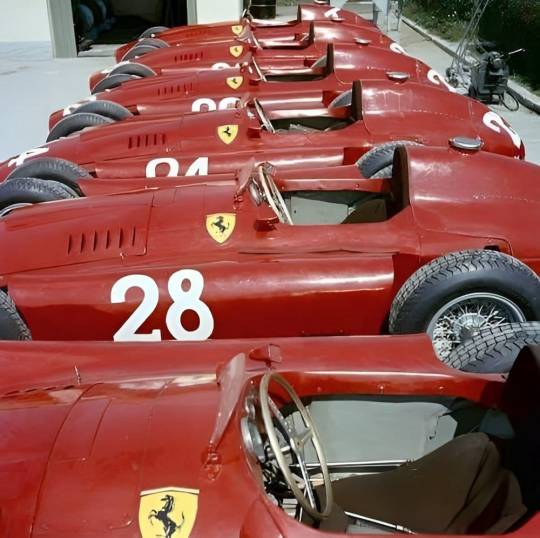
Les Lancia Ferrari D50 du Grand Prix d'Italie - Monza 1956 : #22 Juan Manuel Fangio - #24 Eugenio Castellotti - #26 Peter Collins - #28 Luigi Musso - #30 Alfonso de Portago - #50 Wolfgang von Trips. - source UK Racing History.
#juan manuel fangio#eugenio castelloti#peter collins#luigi musso#alfonso de portago#wolfgang von trips#lancia ferrari#grand prix d'italie#monza
62 notes
·
View notes
Note
hi, i read all your snippets tagged "borgias modern au: bay area edition" recently and wanted to ask, is there a finished fanfic or it's all there is to that concept? because i liked it so much!
Thank you!
The Bay Area Borgias AU is actually the (mostly) unposted publishing house AU I was talking about the other day (...the day before yesterday? what is time), though you sent this before I made that post.
But yeah, I never got the AU to a coherent enough point that it felt ready to post in full. The basic idea is that Rodrigo's aunt Calista (=Pope Calixtus) founded this now very powerful and lucrative publishing house in San Francisco that has since become Amazon crossed with Tor under his leadership. He has ~plans~ for his younger children, of course, but early on, most of his attention is on his eldest child, Luis (=Pere Lluís/Pedro Luis de Borja), already a prestigious writer while César, Juan, and Lucrecia are growing up in their mother's house after the divorce.
So there was this earlier part of the story that I wrote quite a bit of, mostly centered on Lucrecia in middle school after she scores very high on some standardized tests and is moved up a grade. There's the usual concern about her being out of sync with her age group, especially considering the separation from her twin brother Juan, but her family pushes pretty hard for it and she has another, closer brother in the new grade, anyway (César, obviously).
César promises to help her and make her welcome in her new grade and is actually very willing to do this—though if anything, Lucrecia helps him make more friends than he would have otherwise done. In particular, the two of them befriend an unpopular (gay) new kid, Miguel Corella, who becomes a loyal lifelong friend to them both in the years that follow.
At this point, the three siblings only periodically interact with Rodrigo and Luis (though Rodrigo is distinctly fond of Juan, whom he sees as the truly creative one if a bit undisciplined, and Rodrigo also finds Lucrecia pretty adorable). But Luis's tragic death in, I think, a car accident drastically alters Rodrigo's relationship with his now high school-aged younger children (perhaps most of all with Juan, but certainly César and Lucrecia as well).
There was a side fic focused pretty specifically on the strain on Juan's relationship with Lucrecia during and after all this, and ways he sort of tries to reach out to her but is also an asshole, and they drift apart.
And then there's the main fic, which as you've seen, starts out from the POV of Al, the rich and insecure boyfriend of the now mid-20s Lucrecia. She and César work for the family company and are actually quite good at their respective jobs (I think L ended up in marketing and enjoys it, while C is stuck in editing hell), and it was going to follow Al for a bit as he gets to know her family and feels rather pathetically threatened in his extremely WASPy way before seguing into the "real" story of Lucrecia, César, and Juan. I never even finished the Al section of this part, though :(
#anon replies#respuestas#nice things people say to me#fic talk#borgias modern au: bay area edition#political shenanigans and codependent siblings#long post#rodrigo borgia#lucrezia borgia#cesare borgia#juan borgia#alfonso d'aragona
7 notes
·
View notes
Text
Leonor to Catherine of Aragon. House of Borbón to House of Trastámara.
#credits to the rightful owners#house of borbón#House of Trastámara#spanish royal family#princess leonor#king felipe vi#Juan carlos I#infante juan count of Barcelona#king Alfonso xiii#king alfonso xii#queen isabella ii of spain#king Ferdinand VII#Charles IV of Spain#Charles III of Spain#Philip V of Spain#Luis grand dauphin#Maria Theresa of Spain#Philip IV of Spain#Philip III of Spain#Philip II of Spain#Charles V of Spain#juana i of castile#catherine of aragon
8 notes
·
View notes
Note
Do you know if there is any Draal concept art?
One or two!
Back in his purple Bular period by Headless Studios

Source
And a video turnaround by Juan Solis where he gained arm blades also during his Bular period
vimeo
Then we have Headless Studios again with his more familiar blue self

Source
And finally this artwork by Alfonso Blaas painted over a 3D ambient occlusion model. and based on Headless lineart. This particular version is unique as the larger version at the source below doesn't include the back view, it must have been in his portfolio at one point though.

Source
There WAS a slide shown at the Annie Awards though much like the one with Strickler and Steve not managed to track them down yet. There is however more in the artbook including of his purple stage and a detailed look at his arm!
Some of these images were shamelessly nabbed from the Draal/Bular/Gunmar design path, these guys are weirdly tied together. The blue colour is 100% Steve's fault though and is the only trace from when he was still a changeling.
#Trollhunters#Tales of Arcadia#Vis Dev: Headless Studios#Vis Dev: Juan Solis#Vis Dev: Alfonso Blaas#archive requests
40 notes
·
View notes
Text

March 2024. This seven-part Mexican miniseries (set in Yucatán, though partly filmed in Colombia) is a breezy, generally agreeable hybrid of Indiana Jones and caper movies like the OCEAN'S series. Miguel (Alfonso Dosal), the miscreant son of a now-senile famous archaeologist (ahem), teams up with his gay conman uncle Wilson (Juan Pablo Medina) and assembles a motley crew of misfit thieves and con artists to search for a legendary Maya treasure, pursued by a ruthless enemy (Adrian Ladrón) with a seemingly endless array of heavily armed goons and a grudge against Miguel for reasons Miguel can't fathom.
The story breaks no new ground, and its joviality initially feels a little forced; as with the weaker Indiana Jones movies, it sometimes assumes it can strong-arm you into enjoyment by just putting bickering characters in situations and hustling everyone through action setpieces like schoolchildren being dragged through an amusement park they're not that into. Fortunately, as the rest of the crew is fleshed out, the characters begin to grow on you and the series becomes more genuinely endearing, if still not very deep. Medina is great fun, as is Mabel Cadena as Inés, the only competent one of the cops on the crew's trail, and Ester Expósito (from ÉLITE) effortlessly steals most of the scenes she's in as Miguel's stone-faced scam artist ex-girlfriend Lilí, whom Miguel is not so secretly hoping to win back despite her resolutely mercenary priorities.
As with the Indiana Jones movies, the story's cultural sensitivity is low, the way it uses the villain's burn scars as shorthand for Evil is rather offensive, and some stabs at seriousness toward the end flirt with mawkishness, but it's no worse (albeit also no better) than most of the genre in these respects. CONTAINS LESBIANS? Inés the cop is apparently bisexual, although little comes of it in the story. VERDICT: Not always as fun as it thinks it is, but a pretty good time overall. Anyone who likes LEVERAGE or the OCEAN'S movies would probably enjoy it.
#teevee#bandidos#juan pablo medina#ester exposito#alfonso dosal#mabel cadena#adrian ladron#ocean's eleven#ocean's eight#leverage#hateration holleration#indiana jones#it is much much better than the last two indiana jones movies#although that is an extremely low bar
4 notes
·
View notes
Text

dosal: Amor bandido… 💚🤠
Alfonso Dosal, Andrea Chaparro, Ester Expósito, Juan Pablo Fuentes, Juan Pablo Medina, Mabel Cadena and Nicolás Furtado via dosal on Instagram, 03/19/2024.
#alfonso dosal#andrea chaparro#ester exósito#juan pablo fuentes#juan pablo medina#mabel cadena#nicolás furtado
2 notes
·
View notes
Text










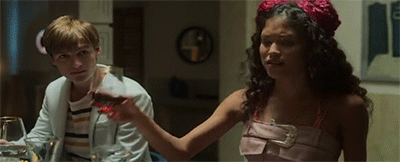
#claudia ramirez#alfonso dosal#juan pablo medina#juan pablo fuentes#bandidos#netflix#s01e05#serie#my gifs#2024
4 notes
·
View notes
Text
Searching for Speed
In the years before aerodynamics were “discovered” for racing cars. streamlining was often thought as being the way to go for greater speed. Here are two examples as tried in practice at the French Grand Prix which would take place on July 1, 1956 at the Reims-Gueux circuit. Above is one such trial of a special nose and side sponsons between the front and rear wheels, copied no doubt from those…

View On WordPress
2 notes
·
View notes
Text
Buscarán el tesoro más grande que nadie vio jamás… “Bandidos”

Después de descubrir un mapa antiguo, Miguel, Lilí, Wilson y otros bandidos comienzan una aventura en el Caribe mexicano llena de peligros para intentar descubrir un tesoro que ha estado perdido durante muchos años. ¿Podrán lograrlo con un plan improvisado, un poco de buena suerte y sabiendo que no son los únicos detrás de este tesoro?.
Estreno: 13 de marzo de 2024 en Netflix.
youtube
La serie cuenta con las actuaciones de Ester Expósito, Alfonso Dosal, Juan Pablo Medina, Andrés Baida, Andrea Chaparro, Mabel Cadena, Nicolás Furtado, Juan Pablo Fuentes, Bruno Bichir, entre otros.

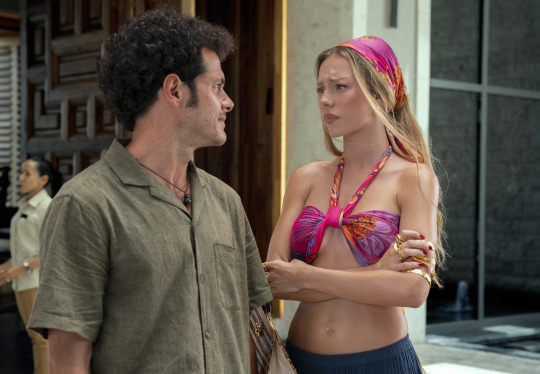



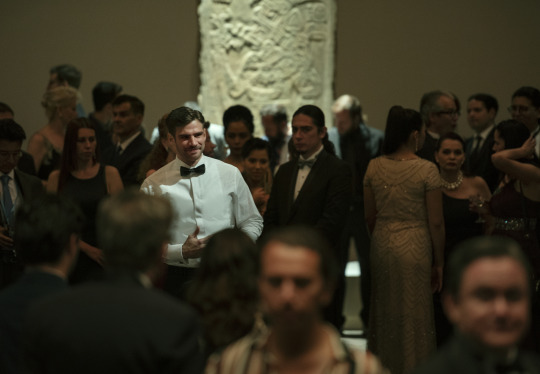
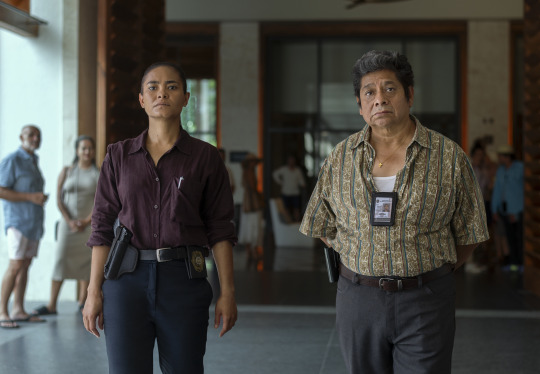



Detrás De Cámaras

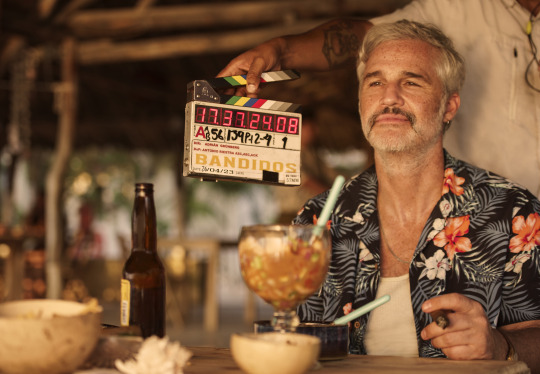


Sesión Fotográfica




Los protagonistas asistieron a la premiere de la serie en la Ciudad de México


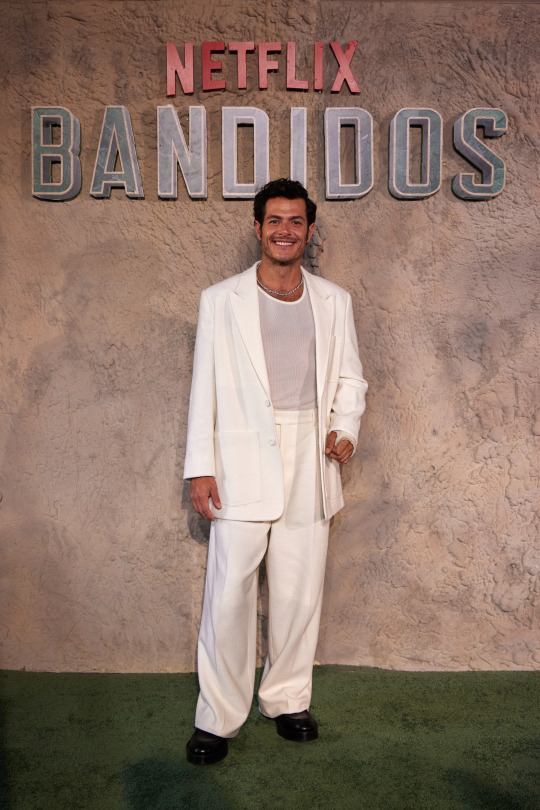

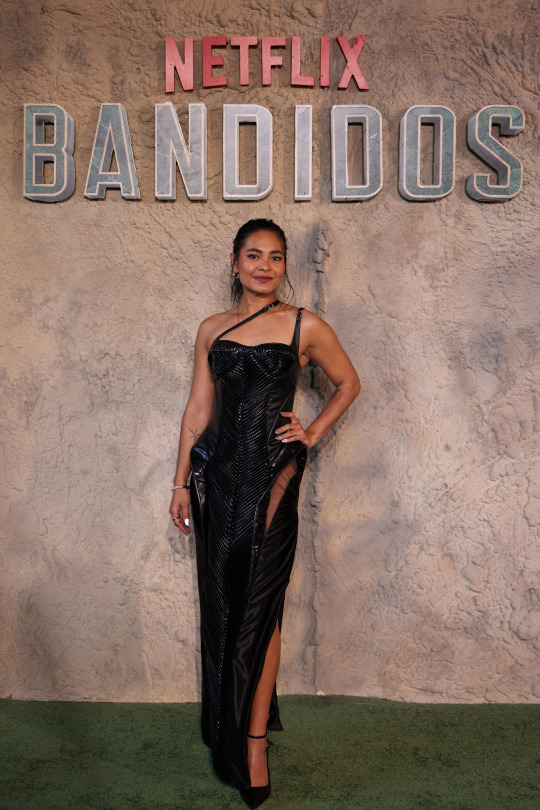




#Bandidos#Ester Expósito#Alfonso Dosal#Juan Pablo Medina#Andrés Baida#Andrea Chaparro#Mabel Cadena#Nicolás Furtado#Juan Pablo Fuentes#Bruno Bichir#Series#Netflix
2 notes
·
View notes
Text

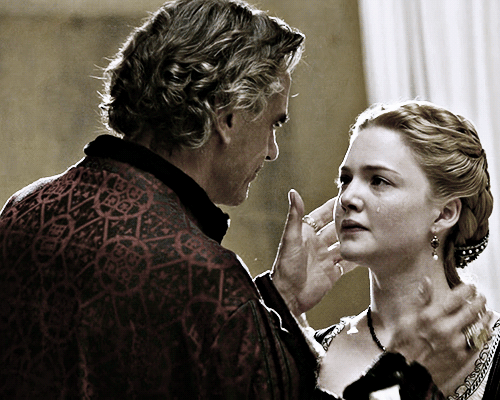


"There is no one closer—" Oh, don't lie to me, Father.
#it's an interesting parallel because rodrigo really made them believe that they're the light of his life#but deep down both of them know it's not true because he still prioritizes his own ambitions over them#juan; he's insecure about rodrigo's love and wants to prove himself worthy since rodrigo always threatens him with cesare's hypercompetence#lucrezia; she's still being forced to marry people she doesn't want to for his political bs#in the finale; rodrigo and cesare plotted to kill alfonso while leaving her in the dark...not caring about her feelings#they all know their father uses them more than he loves them or care for their concerns#lucrezia borgia#juan borgia#the borgias#perioddramaedit#tvedit#cinemapix#tvarchive#holliday grainger#david oakes#dailytvfilmgifs#davinciae#theborgiasedit#filmgifs#by jen
226 notes
·
View notes
Text







A guide through the monarchs of Aragon in La Catedral del mar & Los Herederos de la tierra
@asongofstarkandtargaryen
During the series the role of the members of the monarchy is secondary, but they are used to help to establish a concrete historical context and they're very determinant in the situation of the Puig and Entanyol families involving political estrategies of supporting this or that king, that gave them benefits or dacay (Arnau's rise with Pedro IV, Genís & Roger rise with Juan I and Martín I and Bernat with Fernando I). So, I wanted to make a recopilation of the monarchs shown during these series and their families.
House of Aragon/ House of Barcelona (descendants of the Jimena dinasty)
The Jimena dinasty is called like that because its origin was Jimeno "the Strong", grandfather of Eneko Arizta, and one of its branches was the Arista-Iñiga dinasty started by Eneko.
Eneko, his son García Iñiguez and his grandson Fortún Garcés were Lords of Pamplona, Fortún Garcés married Awriya bint Lubb ibn Musa (great-grandaughter of Musa the Great), and one of their daughters was Oneka Fortúnez, who married Abd Allah I of Cordoba (their son was Muhammad, who fathered the calipha Abd al-Rahman III with a basque woman called Muzna) and then Oneka married Aznar Sánchez de Larraún, and had a daughter with him, Toda Aznárez. Toda married Sancho Garcés I, the truly first king of Pamplona, was Sancho Garcés I (the first king of the Jimena dinasty).
Sancho Garcés III (992-1036) was king of Pamplona, Count of Aragon and king consort of Castile, whose bastard son with Sancha de Aibar, Ramiro I, inherited the counties of Aragon, Sobarbe and Ribagorza, and united them to form the kingdom of Aragon.
Then Petronila I (1136-1173), Ramiro I's great-grandaughter, married Ramón Berenguer IV count of Barcelona. Their son Alfonso II of Aragon was the first king of the Crown of Aragon and Pedro IV's great-great- great-grandfather.
In summary all the Aragonese monarchs are descedants of Eneko Arizta (and that's the way we can link Irati with LCDM/LHDLT)
Pedro IV
Pedro IV of Aragon, II of Valencia and I of Mallorca (Balaguer, Lleida, Catalonia, September 5, 1319 - Barcelona, Catalonia, January 5, 1387), called "the Ceremonious" or the Punyalet ('the one with the dagger', due to a dagger he used to carry), son of Alfonso IV of Aragon and Teresa de Entenza.
King of Aragon, Valencia and Mallorca (1344-1387); Duke of Athens (1380-1387) and Neopatria (1377-1387); count of Barcelona (1336-1387) and of Ampurias (1386-1387).
In 1338 he married María de Navarra (1326-1347), daughter of Felipe III and Juana II of Navarra. Offspring:
Constanza (1343-1363), married in 1361 to Federico III of Sicily, and Juana (1344-1385), married in 1373 with Juan I de Ampurias.
In 1347 he married Leonor of Portugal (1328-1348), daughter of Alfonso IV of Portugal. She died the following year of the Black Death.
In 1349 he married Eleanor of Sicily (1325-1375), daughter of Pedro II of Sicily. Offspring:
Juan I (1350-1396), Martin I (1356-1410) and Leonor (1358-1382), married to Juan I of Castile. Leonor was the mother of Fernando I of Aragon.
In 1377 he married Sibila de Fortiá, daughter of the Empordà nobleman Berenguer de Fortiá. Offspring:
Isabel (1380–1424), who married Jaime II of Urgel, future suitor for the aragonese crown.
During his reign the Aragonese expansionism in the Mediterranean continued, focused on southern Italy and Greece.
Although he was ally of Alfonso XI, Pedro IV had a great rivalry with his son Pedro I of Castile and fought against him in some conflicts, like the War of the two Pedros (1356-1369) and the first Castilian Civil War (1351-1369), in which Pedro I was supported by Pedro I of Portugal (one of his bastard sons, Juan I of Portugal, was the founder and first king of the Avis dinasty) and Muhammad V of Granada, and Pedro IV supported the bastard children of Alfonso XI with his lover Leonor de Guzmán (Pedro de Aguilar, Sancho Alfonso, Fadrique Alfonso, Enrique II of Castile, Fernando Alfonso, Tello, Juan Alfonso, Juana Alfonso, Sancho and Pedro Alfonso), who started several revolts against Pedro I of Castile. The wars ended when Enrique killed Pedro I, and he became the first king of Castile of the Trastamara dinasty.
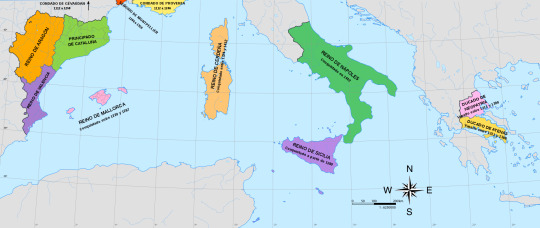
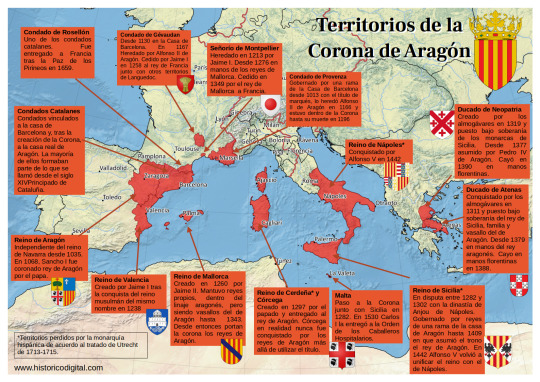
Sibila de Fortiá
Sibila de Fortiá (Fortiá, Girona, Catalonia, 1350 - Barcelona, Catalonia, 1406), queen consort of the Crown of Aragon (1377-1387). She was the daughter of Berenguer de Fortiá and his wife Francesca de Vilamarí. In 1371 she married for the first time Artal de Foces, an Aragonese nobleman, whom she widowed in 1374, and then she the lover of Pedro IV and had a daughter with him, Isabel.Pedro and Sibila married in 1377. After the wedding, Pedro surrounded himself with Empordà nobles as well as Sibila's relatives.
Pedro IV was very ill at the end of the year 1386, and Sibila, fearful of the wrath of the future King Juan, fled to the castle of San Martín de Sarroca (Barcelona), which belonged to her brother Bernat de Fortiá. There she was imprisoned by Juan I, who treated her harshly, accusing her of abandoning the king on his deathbed and of several robberies in the palace. She was confined in the castle of Moncada (Barcelona) until she renounced his property granted by the king. Finally, Sibila retired to the convent of San Francisco in Barcelona, where she died in 1406.
Juan I
Juan I of Aragon, called the Hunter or the Lover of All Kindness (Perpignan, Occitania, France, 1350 - Torroella de Montgrí, Girona, Catalonia, 1396), King of Aragon, Valencia, Mallorca, Sardinia and Corsica, and Count of Barcelona, Roussillon and Cerdanya ( 1387-1396). Son of Pedro IV and Leonor of Sicily.
His first marriage was with Marta de Armagnac (1347-1378), daughter of Count Juan I de Armagnac. With whom he had: Jaime (1374), Juana, (1375-1407) who married Mateo, Count of Foix. After the death of her father, she claimed the throne with her husband, but they were defeated; Juan (1376), Alfonso (1377) and Leonor (1378).
Widowed, Juan married Violante de Bar (1365-1431), daughter of Robert I, Duke of Bar. Offspring:
Jaime Duke of Girona (1382-1388), Yolanda, who married Louis II of Anjou, titular king of Naples. Their son, Luis III, claimed the throne after the death of Martín I, in the engagement of Caspe; Fernando Duke of Girona (1389), Antonia (1391-1392), Juan Duke of Girona (1392-1396), Eleanor (1393), Pedro Duke of Girona (1394) and Juan (1396)
Martin I
Martin I of Aragon, also called the Human or the Old (Girona, July 29, 1356-Barcelona, May 31, 1410), was king of Aragon, of Valencia, of Majorca, of Sardinia and count of Barcelona (1396-1420) and king of Sicily (1409-1410). Second son of Pedro IV of Aragon and his third wife Leonor of Sicily.
Martín was called "the Human" because of his great passion for the Humanities and books. The library of Martín I is the first that could be considered from Renaissance, if at that time in the history of the Iberian peninsula the term can already be used.
Martin married in 1372 with Maria de Luna, daughter of Lope, the first count of Luna, in 1374. From this union they were born:
Jaime (1378), Juan (1380) and Margarita (1388) and Martin I of Sicily "the Younger" (1376-1409), first husband of Blanca I of Navarra.
When Martin the Younger died, Martin married Margarita de Frades, although they left no issue.
His entire reign was marked by the Western Schism that divided Christianity since 1378. He was a supporter of the popes of Avignon (where he went the year of his coronation to swear allegiance to Benedict XIII "the Pope Luna", Pedro Martínez de Luna y Pérez de Gotor, with whom it seems that he came to establish a friendly relationship ), from whom he obtained support in his claims over the kingdom of Sicily against the Anjou, supporters of the popes of Rome. In 1400, he would marry his niece Yolanda to Louis II of Anjou in order to defuse tensions. He met in Avignon with the antipope Benedict XIII, Aragonese and a relative of the queen, with the intention of reaching a solution to the schism and, later, in 1403 he intervened militarily against the siege that Benedict suffered in his papal seat, rescuing him and welcoming him in Peñíscola .
House of Trastamara (the Aragonese branch)
Fernando I
Ferdinand I of Aragon (Medina del Campo, Valladolid, Castile and Leon, November 27, 1380-Igualada, April 2, 1416), also called Fernando de Trastámara and Fernando de Antequera, the Just and the Honest, was an infant of Castile, king of Aragon, Valencia, Mallorca, Sardinia, Count of Barcelona (1412-1416), and regent of Castile (1406-1415), during the minority of Juan II of Castile. Son of Juan I of Castile and Leonor of Aragon.
He was the first Aragonese monarch of the Castilian dynasty of the Trastámara, although he was of Aragonese origin on his mother's side.
He married Leonor de Alburquerque
Alfonso the Magnanimous (Medina del Campo, 1394-1458), king of Aragon, with the name of Alfonso V, and of Naples and Sicily, with the name of Alfonso I.
María de Aragón (Medina del Campo, 1396-1445), first wife of Juan II of Castile and mother of Enrique V of Castile
Juan II (Medina del Campo, 1397-1479), King of Aragon and King consort of Navarre.
Enrique (1400-Calatayud, 1445), II Duke of Villena, III Count of Alburquerque, Count of Ampurias, Grand Master of the Order of Santiago.
Leonor (1402-1445), who married Eduardo I of Portugal. Mother of Alfonso V of Portugal, Juana of Portugal (Enrique IV's second wife) and Leonor of Portugal, who married Frederick III of Habsburg (they were parents of emperor Maximilian I of Austria)
Pedro (1406-1438), IV Count of Alburquerque, Duke of Noto.
Sancho (1400-1416)
Alfonso V
Alfonso V of Aragon (Medina del Campo, 1396 – Naples, June 27, 1458), also called the Wise or the Magnanimous, king of Aragon, of Valencia, of Majorca, of Sicily, of Sardinia and Count of Barcelona (1426-1458); and King of Naples (1446-1458).
Alfonso V can be considered as a genuine prince of the Renaissance, since he developed an important cultural and literary patronage that earned him the nickname of the Wise and that would make Naples the main focus of the entry of Renaissance humanism in the sphere of the Crown of Aragon.
From his relationship with his lover Giraldona de Carlino, a napolitan noblewoman, he had three children:
Fernando (1423-1494), his successor in the kingdom of Naples under the name Fernando I.
Maria (1425-1449), married to Lionel, Marquis of Este and Duke of Ferrara.
Leonor, or Diana Eleonora (?-1450), married the nobleman Marino Marzano, Prince of Rossano.
Maria of Castile
María of Castile (Segovia, Castile and Leon, November 14, 1401-Valencia, October 4, 1458). Infanta of Castile, Princess of Asturias (1402-1405) and Queen of Aragon (1416-1458) for her marriage to Alfonso the Magnanimous. First daughter of Enrique III "the Mourner" and Catherine of Lancaster. Sister of Juan II of Castile, untie of Enrique IV and Isabel I.
The marriage between María and Alfonso is celebrated in the Cathedral of Valencia on October 12, 1415. The ceremony was officiated by the antipope Benedict XIII, who also granted the matrimonial dispensation for the wedding.
In 1420, when the king left for Naples for the first time, he left the government of his kingdoms in the hands of Maria as lieutenant general. The absence of the Magnanimous would last three years, during which María had to face the rapid deterioration of the economic situation in Catalonia, the territorial struggle with the Castilian Crown, as well as the conflicts of a social nature that shook her in different kingdoms. On his return to Aragon in 1423, Alfonso V began the war with Castile, along with his brother King Juan of Navarra. But her financial resources were exhausted and in 1429 Queen María had to act as a mediator between her husband and her brother, King Juan II of Castile, to put an end to the dispute. However, Alfonso's situation did not improve, due to the recession suffered by the Catalan economy and the social conflicts caused by it. The Courts of Barcelona in 1431 demanded from the king a series of measures to correct the enormous deficit of the Catalan treasury and trade. But Alfonso, fed up with these matters, returned to Italy and gave full powers to the queen as ruler of Aragon; he left the Iberian Peninsula forever on May 29, 1432. This marked Alfonso V's final break with the Crown of Aragon, which, however, he never renounced.
+ Bonus track (although he doesn't appear in this series)
Juan II
Juan II of Aragon and Navarra, the Great, or the Faithless according to the Catalan rebels who rose up against him (Medina del Campo, June 29, 1398-Barcelona, January 20, 1479) was Duke of Peñafiel, King of Navarre (1425-1479), King of Sicily (1458-1468) and King of Aragon, Mallorca, Valencia, Sardinia (1458-1479) and Count of Barcelona, son of Ferdinand I of Aragon and Leonor de Albuquerque.
From his first marriage to Blanca I of Navarra (daughter of Leonor of Castile and Carlos III of Navarra):
Carlos (1421-1461), Prince of Viana and Girona, Duke of Gandia and Montblanch, titular King of Navarra as Carlos IV (1441–1461), married Agnes of Cleves. He wrote the 'Chronicles of the Monarchs of Navarra', about the history of his antecessors, from Eneko Arizta in the 8th century up to the 15th century.
Juan (1423-1425)
Blanca of Navarra (1424-1464), first wife of Enrique IV of Castile
Leonor (1425-1479), married to Gastón IV de Foix, Queen of Navarre under the name of Leonor I.
From his second marriage to Juana Enríquez:
Leonor of Aragon (1448)
Fernando II (1452-1516), king iure uxoris of Castile (1474-1504) and then regent between 1507 and 1516, under the name of Fernando V due to his marriage to Isabel I, king of Sicily (as Fernando II, 1468-1516), Aragon and Sardinia (as Fernando II, 1479-1516), Naples (as Fernando III, 1504-1516), and from Navarra (as Fernando I, 1512-1516)
Juana (1455-1517), second wife of Fernando I of Naples. Her daughter Juana married Fernando II of Naples (Fernando I of Naples' grandson)
During his youth, Juan fought in the Castilian-Aragonese war (1429-30) and the Castilian Civil War (1437-1445) in the Aragonese team against Juan II of Castile, his son Enrique and the Constable Álvaro de Luna (favourite of Juan II), due to the Aragonese political influences in Castile and the full control that Álvaro de Luna had over Juan II of Castile that allowed him to become very powerful, so some members of the Castilian nobility wanted to remove Álvaro out of Juan II side because of that, and the Aragonese reacted to the anti-aragonese convictons of Álvaro.
Álvaro de Luna arranged a new marriage between Juan II of Castile and Isabel of Portugal (mother of Isabel I) in 1447. The constable intended with this dynastic alliance to strengthen the political ties that united Castile and Portugal against the common enemy: the Catalan-Aragonese Crown, but from 1449, Isabella of Portugal indirectly supported the maneuvers of the Great League of Nobles (allies of the Aragonese) formed against the constable. But it would not be until 1453 when Juan II of Castile, possibly tired of the continuous pressure from the aristocracy, left Álvaro on his own. It has often been said that it was the queen herself who demanded that her husband signed the prison order against Álvaro, through Juan Pacheco, Marquis of Villena.
By 1441 Blanca I de Navarra died and Juan II married the daughter of Fadrique Enríquez (one of his Castilian allies, the admiral of Castile), Juana Enríquez y Fernández de Córdoba.
After the death of Blanca I, a dispute between Juan II and Carlos de Viana about the sucession for the Navarrese throne. Juan was king Iure uxoris of Navarre and wanted to be keep his position as king, but Carlos and his supporters claimed that the prince was the rightful king as firstborn son of the queen and in 1451 the Navarrese civil war started.
In the following years the tension between Juan and Carlos increased with the birth of Fernando, who was pushed by his mother Juana to be the heir of Aragon and Navarra, which Juan later accepted. This change in the sucession was not accepted in Catalonia, that supported Carlos de Viana birthrights, and they started a rebellion against Juan II.
Other supporter of Carlos was Enrique IV, who offered his sister Isabel to Carlos in marriage as a sign of their alliance, but the wedding never happened.
Carlos died in 1461, although the war didn't ended because the Catalan nobility proposed other suitors for the Crown of Aragon and the Principality of Catalonia, like Enrique IV, Pedro of Portugal (grandson of Jaime II of Urgell) and Renato de Anjou during the Catalan civil war, that ended in 1472.
It's interesting that the interesting that the current situation of the Estanyol family at the end of Los Herederos de la tierra is that there are two brothers from different mothers, and whose father have benefited one of them over the other, so it may lead to tensions from the part that was not benefited, Arnau Jr is the main heir in Bernat's will, so maybe in the future Marta Destorrent will try to pit her son Baltasar against his elder brother to take Arnau Jr's place. By period of time I find very likely that this happens during the reigns Maria of Castile and Juan II, and the situation of the Estanyol succession could parallel the Carlos de Viana-Fernando II problem, although in this case the younger son was the benefited one and the one who inherited his father's kingdoms and maybe the Estanyols are part of the Catalan nobility that defended Carlos' birthrights, although some other Catalan nobles supported Juan II & Fernando alongside of peasants and smallfolk, during the First Remensa War during the Catalan civil war.
The Remensa War consisted in revolts organised by peasants who wanted to end the servitude to which their feudal lords had subjected them, so I think that probably the Estanyol-Llor family would support the peasants because of their backgrounds.
#la catedral del mar#los herederos de la tierra#the cathedral of the sea#heirs to the land#history#crown of aragon#aragonese monarchs#pedro iv de aragón#juan i de aragón#martín i de aragón#sibila de fortiá#fernando i de aragón#alfonso v de aragón#maria de castilla#juan ii de aragón#gifs#period dramas#house of aragon#house of trastamara#house of barcelona#long post
21 notes
·
View notes
Text

Juan Manuel Fangio, Luigi Musso, Eugenio Castellotti, Harry Schell and Alfonso De Portago fooling around // Sebring 🇺🇲, 1956.
#boys being boys I guess lol#juan manuel fangio#luigi musso#eugenio castellotti#henry schell#alfonso de portago#classic f1#f1#formula 1#retro f1#f1 1950s#motorsport
22 notes
·
View notes
Text
Infancia en la memoria; La imagen como testimonio
Infancia en la memoria; La imagen como testimonio
#aperturaintelectual #palabrasbajollave
Thelma Morales García

View On WordPress
#AperturaIntelectual#palabrasbajollaveAI#Agustín Yáñez#Alfonso Reyes#Arte#CONACULTA#Cultura#Dirección General de Publicaciones del Consejo Nacional para la Cultura y las Artes#Educación en imágenes#Escuela#Infancia en la memoria. Cien años de educación básica en imágenes#Jaime Torres Bodet#José Vasconcelos#Juan José Arreola#Justo Sierra#La Infancia#Las aulas#Personajes#Poesía#Precursores de la educación en México#Profesores#Thelma Morales García
5 notes
·
View notes
Text
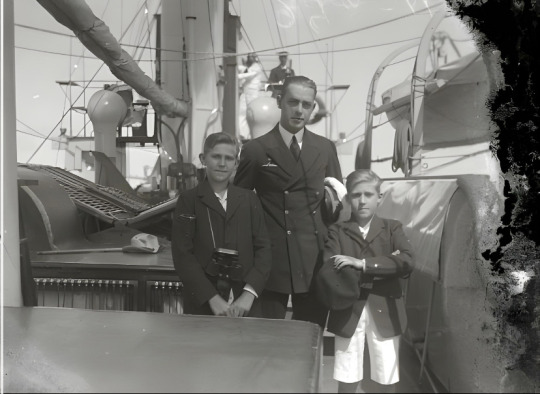
Infante Juan count of Barcelona and infante Jaime aboard the kings ship 1915
2 notes
·
View notes
Text
British comic art and illustrations galore offered across two Catawiki auctions this week
There's a treasure house of British comic art on offer on Catawiki this week across two auctions, one auction closing today
The amount of British comic art offered as part of two similarly titled International Comic Art auctions on the auction site Catawiki has been fairly minimal in recent months, but this week sees a number of items up for sale, across two auctions, one closing today.
In the International Original Comics Art Auction, curated by Filippo Piras, closing today, Monday 10th July 2023, the most sought…

View On WordPress
#Adventure Comics#Alfonso Font#Andy Capp#Catawiki International Comic Art Auction#Catawiki International Original Comics Art Auction#Don Lawrence#downthetubes News#Ferdinando Tacconi#Giorgio Trevisan#Juan Gonzalez#Lion#Look and Learn#Modesty Blaise#Neville Colvin#Paddy Payne#Peter Sarson#Reg Smythe#Robot Archie#Ted Kearon#The Rise and Fall of the Trigan Empire
2 notes
·
View notes